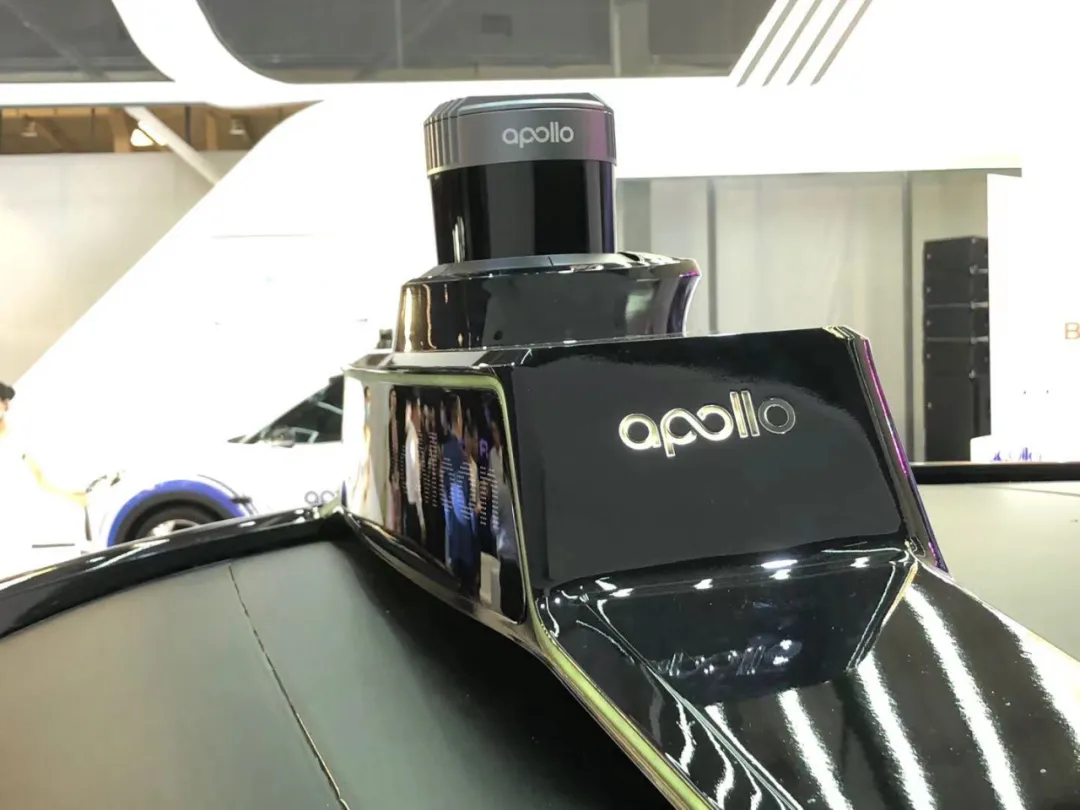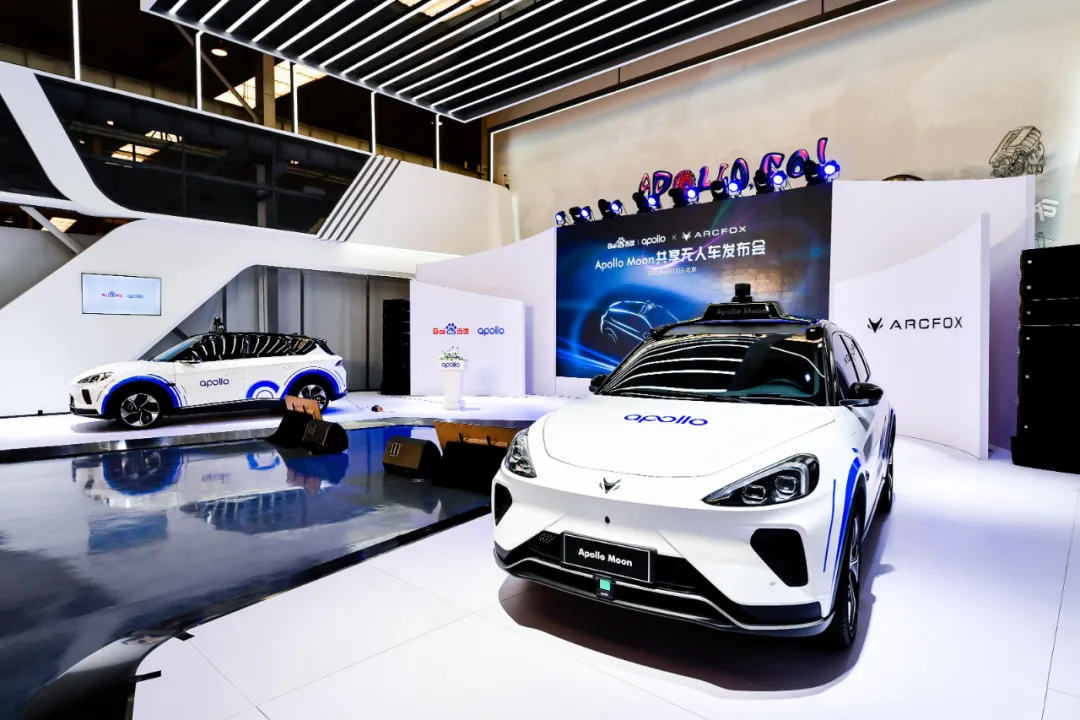Baidu vs. Huawei: Battle of Autonomous Driving
Author: Qiu Kaijun
After Huawei’s 7 minutes of hands-free autonomous driving video was released, Baidu felt the pressure. With 8 years of investment, over 500 test vehicles, and over 12 million kilometers of testing, Baidu appeared to be outperformed by Huawei in the public opinion.
Baidu’s response is apparent. On June 17, Baidu unveiled the new generation of mass-produced autonomous shared vehicles Apollo Moon at the Beijing Apollo Park. Apollo Moon is built with Baidu’s 5th generation Robotaxi technology and aims to be commercially available and operational in Beijing later this year.
Interestingly, Apollo Moon is based on the high-end intelligent electric SUV, Arcfox Alpha T. On the other hand, Huawei’s autonomous driving model that drove hands-free for 7 minutes is based on the Alpha S HI Edition.
Why did both Baidu and Huawei choose the Arcfox Alpha model to collaborate on?
Dai Kangwei, the newly appointed general manager of BAIC New Energy, said, “When we developed this platform, the Alpha, 4 years ago, we laid the foundation for autonomous driving compatibility.”
Cao Chen, the product director of Alpha T, introduced at the Apollo Moon launch that because of ARCFOX’s intelligent IMC platform architecture, Alpha T is able to support the fifth generation Robotaxi autonomous driving technology.
What does Baidu’s Apollo Moon want to achieve? Can Arcfox brand gain momentum and rise in this collaboration?
Apollo Moon is regarded as a shared autonomous vehicle by Baidu, different from the industry’s known Robotaxi. However, it is equipped with Baidu’s fifth generation Robotaxi technology. If applied to current autonomous driving levels, Apollo Moon is near the L4 level. However, in case of autonomous driving failure, there is an emergency button inside the vehicle, and “5G Cloud Driver” will take over.
Starting with the fourth generation Robotaxi, Baidu and automotive manufacturers cooperated to create front-loading mass production vehicles. Apollo Moon continues this strategy. “Besides the customized LiDAR and computing platform, all the sensors and devices are integrated within the vehicle, and the degree of front-end production is very high,” said Wang Yunpeng, Vice President and General Manager of Baidu’s Autonomous Driving Technology department.The sensing equipment of Apollo Moon is 13C5R2L, which consists of 13 cameras, 5 millimeter-wave radars, and 2 LIDARs on the vehicle. The sensors have self-diagnostic and self-cleaning capabilities.

On the computing platform, Apollo Moon is equipped with Baidu’s self-developed central computing platform with a computing power of 800 TOPS. “We have also achieved the integrated design of the main computing system and backup security system, adopted liquid cooling and reduced the overall size, while making it simpler, safer, and with extremely low noise,” said Wang Yunpeng.
Based on the computing platform, sensing equipment, Apollo GO APP, and the operational experience of Baidu Robotaxi, Apollo Moon proposed a design of 59 travel service functions, including identifying vehicles through a customized roof-mounted pickup screen, face unlocking when passengers board, APP-controlled windows and air conditioning, and voice-interaction video and audio systems.
In terms of electric performance, Apollo Moon has an acceleration time of 4.6 seconds from 0 to 100 kilometers per hour and an NEDC range of 653 kilometers.
“We have achieved a cost reduction of half and a 10-fold increase in capability every two years. With the release of Apollo Moon today, we have achieved these two points once again,” said Li Zhenyu, senior vice president of Baidu.
Previously, Baidu’s fourth-generation Robotaxi could run steadily for 2,000 hours, while Apollo Moon has improved this to 20,000 hours.
In terms of cost, Baidu revealed the price for the first time. The cost price of Apollo Moon is 480,000 yuan.
Wei Dong, vice president of Baidu IDG, introduced at the press conference that the cost of Apollo Moon is amortized over five years, with a monthly cost of about 8,000 yuan. Compared with ride-hailing services, drivers’ costs in first-tier cities are already around 8,000 yuan, while the total vehicle and driver costs in second-tier cities are also over 8,000 yuan. Therefore, the shared autonomous vehicle already has the potential to replace ride-hailing services in terms of cost.
Wei Dong also introduced Baidu’s grand plan for Robotaxi: to carry out commercial operations in 30 cities with a fleet of 3,000 vehicles and provide services to 3 million users by 2023.
Why it is called the Arctic Fox?
“As early as 2017, Baidu and BAIC Group had already started a partnership, with the goal of creating a globally leading autonomous driving technology and promoting the development of autonomous driving in China,” Li Zhenyu said at the Apollo Moon launch event.Apart from its outstanding traditional attributes as a means of transportation, the design of the Arcfox Alpha T vehicle, which puts intelligent driving at the center, is the reason why Baidu selected it as a cooperative model.
According to Cao Chen, the Arcfox Alpha T can support the fifth-generation Robotaxi autonomous driving technology due to the intelligent IMC platform architecture of Arcfox. The IMC architecture has undergone high-standard design and validation testing, which can meet the planning of multiple vehicle models, various product definitions, the loading of various key technologies and key systems. Additionally, it has a highly intelligent electronic and electrical architecture, upgradeable cloud services, and high-performance and high-safety Triple Electric technology. These features make Arcfox have the ability to be the first to adopt intelligent new technologies.
As a new world-class vehicle platform that supports autonomous driving, the full-redundancy architecture of the Arcfox Alpha T can not only guarantee excellent handling performance and driving performance, but also support the implementation of autonomous driving functions in the first place. Even if one set of systems fails in various complex road scenarios, the entire vehicle can still execute driving instructions and send passengers to safe locations.
One of the Apollo Moon’s redundant designs is that when a failure occurs, “5G Cloud Driving” can take over. This means a strong communication capability. The EE architecture of the Alpha T uses a transfer rate of one gigabit per second, which is one hundred times faster than traditional architecture. It also applies the technologies of 5G and V2G, which have features like high bandwidth and low latency. This is essential to supporting “5G Cloud Driving”.
Wang Qiufeng, vice president of Arcfox, said, “Our fully redundant architecture and chassis, coupled with our perception system for autonomous driving, are something that technology companies around the world want to compete for in this field.”
At the press conference, Baidu announced that it will deploy a fleet of 1000 Robotaxis based on the Apollo Moon, starting in Beijing and later expanding to nationwide joint operations.
For an automobile enterprise, although this fleet of 1000 vehicles is a benchmark, it is not enough to support sustainable development.
Wang Qiufeng stated that “In 2021, Arcfox’s primary goal is not sales volume. The core is to enhance the awareness, recognition, and reputation of the brand and products.”The sales of Jinkoo is expected to grow with the promotion of the HI version in cooperation with Huawei. Wang Qiufeng revealed that the pre-orders of Alpha S HI version have exceeded 1000 units. However, “we definitely cannot finish the deliveries this year”. As for the sales channels, she introduced that as of May 6th, Jinkoo officially opened 35 stores. By mid-July, it will reach 60 stores, and it will reach 100 stores this year. Apart from Jinkoo, BAIC New Energy also has the BEIJING brand. Dai Kangwei said that both brands will be firmly operated. Jinkoo brand will demonstrate the inclusiveness of technology and the inclusiveness of the industrial chain, and there will be many cross-border explorations that will bring more unexpected fun and scenario applications. The BEIJING brand will focus more on the A-level economic market, “allowing our consumers to drive electric vehicles with almost the same economic benefits as gasoline-powered cars”, and expanding into the public market, such as ride-hailing and battery-swapping taxis. As for the division of labor in cooperation with Huawei and Baidu in autonomous driving, Dai Kangwei said that for ordinary consumers, a full-stack solution is needed, and after freeing consumers’ hands, feet and eyes, how can we please them? “So we work together with Huawei to deepen in the TO C field and seek comprehensive solutions.” In addition, autonomous driving can also create additional value for specific scenarios, “such as the unmanned autonomous driving demonstration launched by Baidu.” In short, Huawei is the autonomous driving partner for TO C, and Baidu is the partner for TO B scenarios.
This article is a translation by ChatGPT of a Chinese report from 42HOW. If you have any questions about it, please email bd@42how.com.
